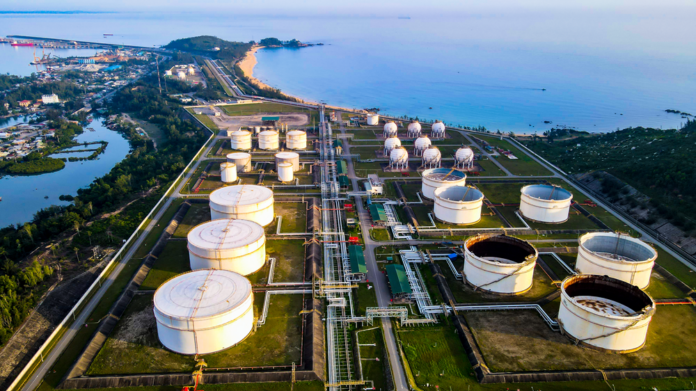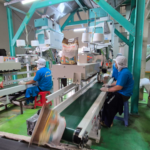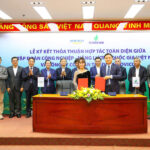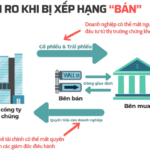Avoiding Past Pitfalls
Vietnam’s Ministry of Industry and Trade is developing a proposal for the construction of a National Oil Refinery and Energy Center in the Dung Quat Economic Zone. The project is estimated to cost between $16.1 and $20.5 billion, divided into two phases. The crucial period will be from 2025 to 2030, with an investment of $14.1 to $17.5 billion. An additional $2 to $3 billion will be invested from 2031 to 2045.
This center is expected to meet at least 30% of the country’s gasoline demand, ensuring reserves equivalent to 30 days of production and consumption. By 2050, it will not only be the country’s energy powerhouse but also one of the largest oil refineries in Southeast Asia.
Once operational, the National Oil Refinery and Energy Center will create approximately 30,000 jobs and contribute about 30% to Quang Ngai’s GRDP. Additionally, secondary investments will boost sectors such as logistics, high technology, human resource training, and urban development.
Speaking to Tien Phong , a specialist from the Vietnam Energy Association emphasized that in the context of the world’s rapid energy transition and Vietnam’s long-term energy security challenges, the construction of the National Oil Refinery and Energy Center in Dung Quat is considered a strategic move. However, lessons from previous oil refinery projects necessitate cautious planning and thorough preparation for this “super project.”
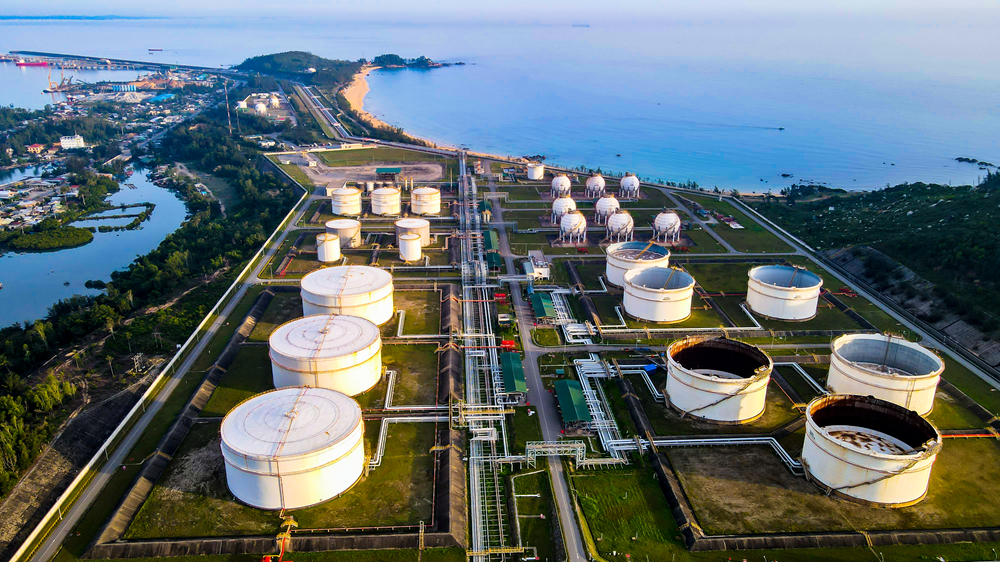
Dung Quat Oil Refinery.
According to the specialist, the Dung Quat oil refinery project previously encountered issues with cost overruns, delays, and technological dependence on foreign countries. This project, which began in 2005 and was completed in 2009, initially had an estimated investment of $1.3 billion but eventually ballooned to $5 billion. The causes included design changes, estimation errors, and limitations in the capabilities of the EPC general contractor.
For many years after its operation, the refinery operated intermittently, relying on Bach Ho oil, and had low efficiency due to inflexible technology. Only recently, with market expansion, favorable oil prices, and improved governance, has the operator achieved profitability.
Another anticipated project, the Nghi Son oil refinery, faced similar challenges during its implementation and operation. Despite being a joint venture between Petrovietnam, Idemitsu Kosan, Kuwait Petroleum, and Mitsui, and expected to surpass Dung Quat in both scale and technology, the project continually faced internal crises, high operating costs, and dependence on Kuwaiti oil. Notably, in January 2022, the refinery nearly ceased operations due to a cash flow crisis, prompting government intervention.
“The illogical contract signing at the Nghi Son refinery put us in a position where we were paying money but had no gasoline to use, and we had to accept any price dictated by the world market,” the specialist said.
More recently, the Long Son Petrochemical Complex project in Ba Ria-Vung Tau (now Ho Chi Minh City) faced similar challenges. Despite being envisioned as one of the most modern petrochemical centers in the region, the project remained incomplete after almost a decade due to slow land clearance, legal entanglements, and inadequate infrastructure connectivity.
“These lessons must be heeded by the National Oil Refinery and Energy Center in Dung Quat. A national energy center cannot be realized with a local project mindset. Hence, the infrastructure, planning, and legal framework for the region must be elevated to a national and inter-regional level, rather than leaving it to a single locality or entity to grapple with,” the specialist advised.
Clarifying Capital and Technology Mechanisms
An expert from the Vietnam Petroleum Association emphasized that with the goal of meeting at least 30% of the country’s gasoline demand, the National Oil Refinery and Energy Center in Dung Quat can be considered the “heart” of the entire economy. Given the massive investment of over $20 billion, there is a need for clear investment phases, a feasible and transparent financial plan, and a well-defined capital mechanism.
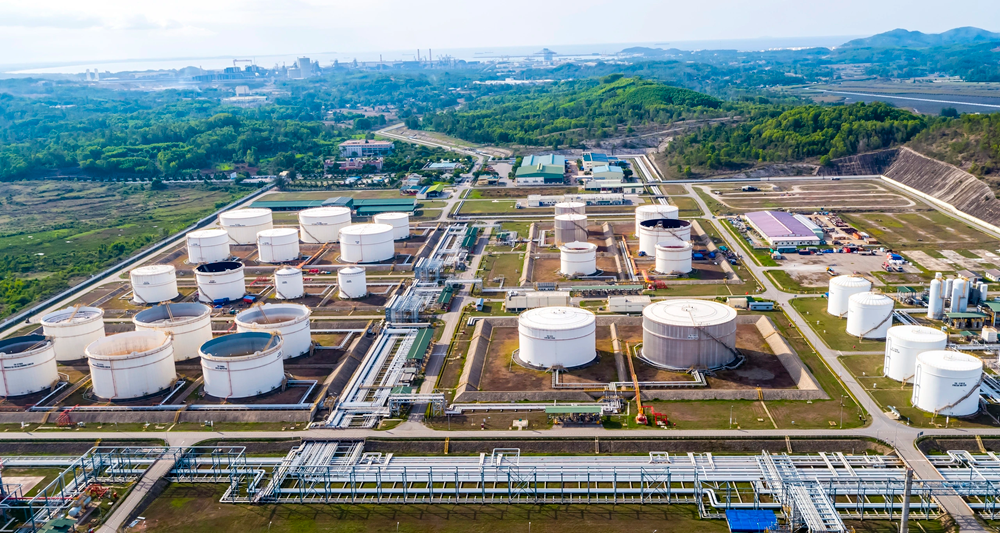
The construction of the National Oil Refinery and Energy Center should aim for modern technology.
“Implementing a project of this scale, two to four times larger than previous oil refinery projects, is no easy feat. The National Oil Refinery and Energy Center must avoid the pitfalls of the Dung Quat and Nghi Son projects, which could only process one type of oil,” the expert cautioned.
“It should embrace multi-source oil processing technologies, including next-generation fuels, sustainable aviation fuel (SAF), and hydrogen. Additionally, there should be a focus on preparing a skilled workforce and engineers to ensure smooth operations,” they added.
Mr. Tran Dinh Thien, former Director of the Vietnam Institute of Economics, emphasized, “We are talking about a national oil refinery and energy center, but if we continue with the old industrial park mentality, where each entity works independently and local infrastructure is left to fend for itself, we will fall into the same trap.”
According to Mr. Thien, the Dung Quat National Oil Refinery and Energy Center will only live up to its “center” moniker if it embraces market-leading technology, has a transparent and unique mechanism, and is coordinated at the national level with accountability to the people. If these conditions are met, it will be a significant boost to Vietnam’s global energy ambitions.
To finalize the proposal, Deputy Prime Minister Bui Thanh Son requested that the Ministry of Industry and Trade urgently review the country’s overall strategies and planning, draw on international experience, and ensure the feasibility and effectiveness of forming the National Oil Refinery and Energy Center model in the Dung Quat Economic Zone.
The Ministry of Industry and Trade should thoroughly review the proposed policy content to ensure it is “unique and breakthrough,” attracting investment and promoting development in line with the resolutions of the Politburo and the master plan.
Hue City Attracts Over VND 28,000 Billion in Investment
In the first seven months of 2025, the city of Hue attracted a total of VND 28 trillion in investment, with 35 new projects and a series of large-scale capital adjustment projects.
Toyota Vios: Massive Discounts, Now Even Cheaper than the Grand i10!
Introducing the all-new Toyota Vios – an exceptional vehicle that offers more than just a smooth ride. Our trusted dealers are offering an exclusive deal, providing not just cash incentives but also a range of exciting accessories to enhance your Vios experience. Step into a world of style, comfort, and convenience with this incredible offer.
“Comprehensive Collaboration Between Petrovietnam and Sovico: A New Impetus for Energy and Economic Development”
With a renewed mission and vision for its new phase of development, the Vietnam National Oil and Gas Group (Petrovietnam) is seeking to expand its collaborations with leading domestic and international enterprises, particularly private sector businesses. This strategic move aims to foster sustainable energy and economic growth in the country.
























